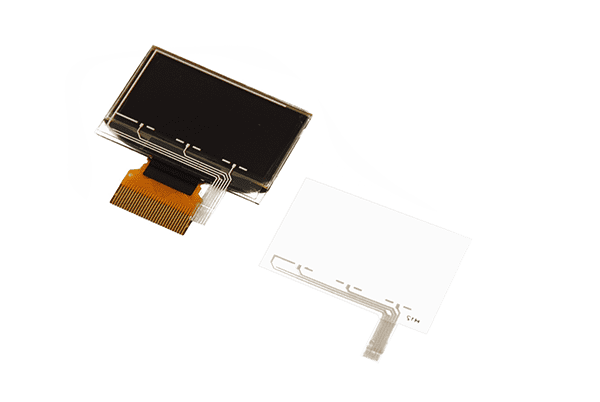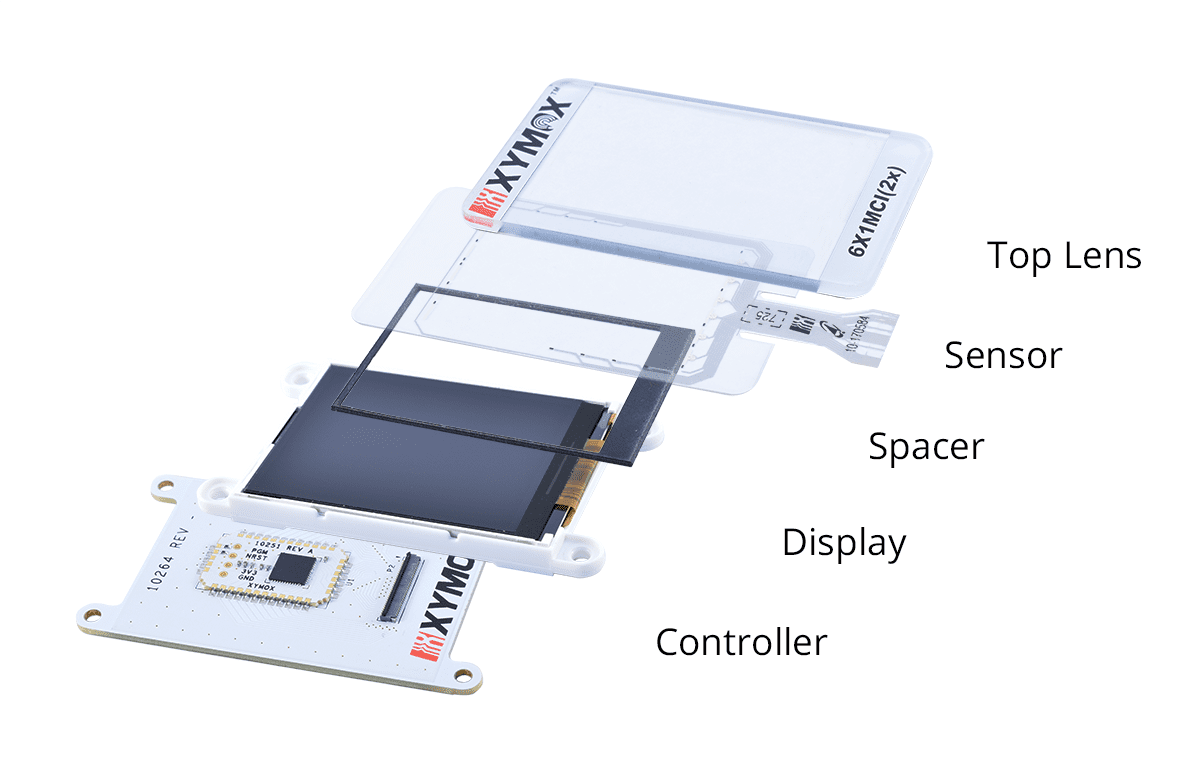If you are thinking about adding a touch screen to your assembly, do you know when can you get by with a standard off-the-shelf product and when you need a custom unit built specifically for your needs? Great question. To be fair, this is an apple and oranges comparison. The two solutions can differ greatly.
What is an off-the-shelf solution?
 An off-the-shelf solution, for this discussion, is a touch sensor that is offered as a standard option to the selected display. As certain display sizes are more common than others, some display manufacturers offer a touch screen as a standard option. The display is shipped from the display manufacturer with the sensor already laminated to the display most often with an optically clear dry film adhesive. Note the subtle change. We first started talking about touch screens in the opening sentence and have now changed to touch sensor. Whoa. Is this a bait and switch tactic? Well, kind of.
An off-the-shelf solution, for this discussion, is a touch sensor that is offered as a standard option to the selected display. As certain display sizes are more common than others, some display manufacturers offer a touch screen as a standard option. The display is shipped from the display manufacturer with the sensor already laminated to the display most often with an optically clear dry film adhesive. Note the subtle change. We first started talking about touch screens in the opening sentence and have now changed to touch sensor. Whoa. Is this a bait and switch tactic? Well, kind of.
A touch screen solution consists of four main parts; the display (OLED, TFT, LCD, etc), the lens (the actual piece of glass or plastic you touch with your finger), the sensor (the clear piece of film that acts like an antenna for the presence of your finger on the lens) and the controller (the brains behind the operation that detects exactly where your finger is and any associated motion such as a swipe). All of these components can be purchased separately or together in some form or fashion. The off-the-shelf solution in the top paragraph was noting an assembly of a sensor and display. Often, the controller is also included on the flex tail of the sensor as well. The only thing missing is the top lens. How big of a deal can that be? A big deal….for the manufacturing engineer who is trying to assemble everything efficiently, effectively and with a minimal capital budget for tooling; a big deal for the electrical engineer trying to optimize the sensitivity of the solution, compensate for a noisy display, deal with gloved hands, temperature swings and moisture on the lens; a big deal to the quality engineer who needs to honor the 7 year or 10 year warranty.

Price of the sensor:
Let’s acknowledge the elephant in the room. An off-the-shelf sensor is, and will always be, less expensive than a custom sensor. If everything thing else in the system is the same, an off-the-shelf sensor solution can be a great deal. If it works well for everyone involved (purchasing, engineering, manufacturing, sales/marketing, and quality) and does not cause any cost increases in other areas because it is compromised solution, use it. Our experience with medical, industrial and commercial customers says there are many other factors to consider than just the bill of materials. Custom sensor solutions are designed with two things in mind:
- Meet/Exceed the performance requirements.
- Minimize total cost of ownership.
Performance issues are often an issue with either a noisy display and the sensor is too far from the top surface where the finger touches the lens. Custom solutions allow the sensor to be mounted directly onto the top lens thus, creating a space between the sensor and the noisy display and getting the sensor closer to the finger. If required, a shield layer can be added to the sensor to further isolate from the display.
Minimizing the total cost of ownership has many different inputs for medical and industrial customers:
- Ease of final assembly
- Minimum number of subassemblies or components
- Ease of repair
- Product/lifecycle management
With a custom sensor, you can count on delivery of the sub-assembly that fits best into your manufacturing system. Additional features include specialized gaskets and coatings on the top lens to meet end product durability requirements. One great feature is adding an NFC antenna directly onto the sensor. This gives maximum performance of the NFC with a lower number of part numbers on the BOM.
Although you hope your product never needs repairing, it is something that must be kept in mind along with minimizing the cost of repair. You can’t control which component breaks, but you can control the difficulty in replacing the part. The lens or display may not need to be replaced, but they may need to be removed in order to complete the required repair. Custom sensors can often make this task easier and thus save money.
For medical customers, the cost of testing associated with approval of a product can be significant. Often times, changes to the BOM mandate requalification. A custom sensor solution means the sensor assembly approved at the start will be available to you as long as required. The product will not be obsoleted because volumes are down; it is simply transitioned from active production to service and we continue to build and supply that assembly.
Custom doesn’t mean expensive. A custom sensor solution delivers exactly what you need to make sure your product hits its performance requirements and overall cost objectives.
